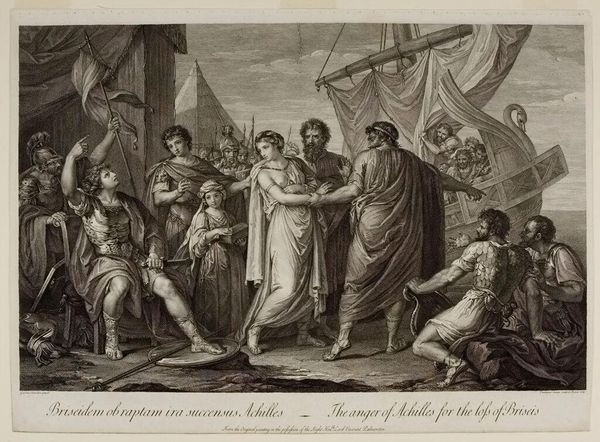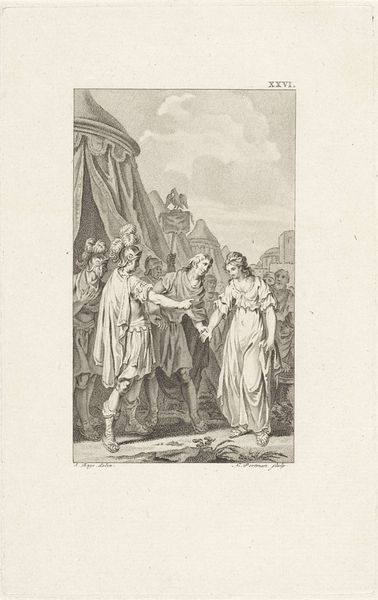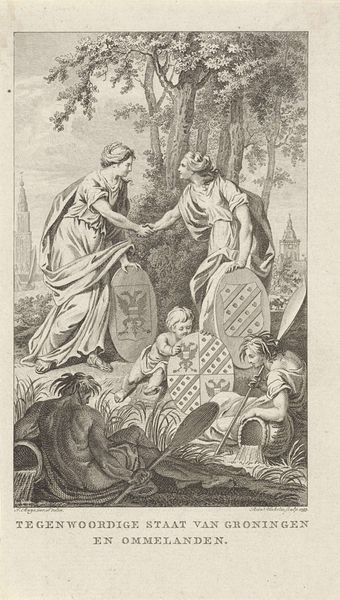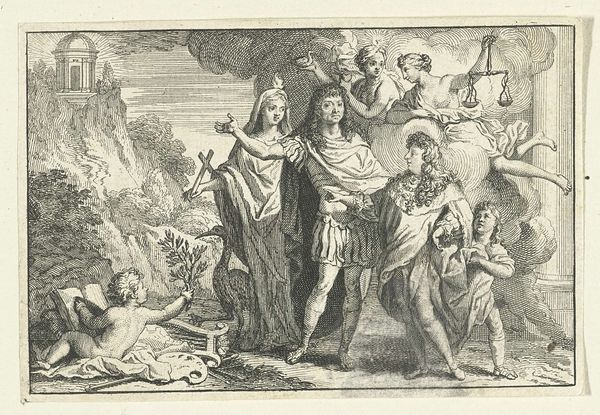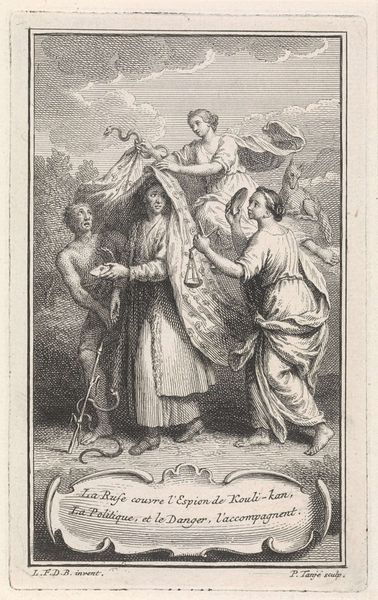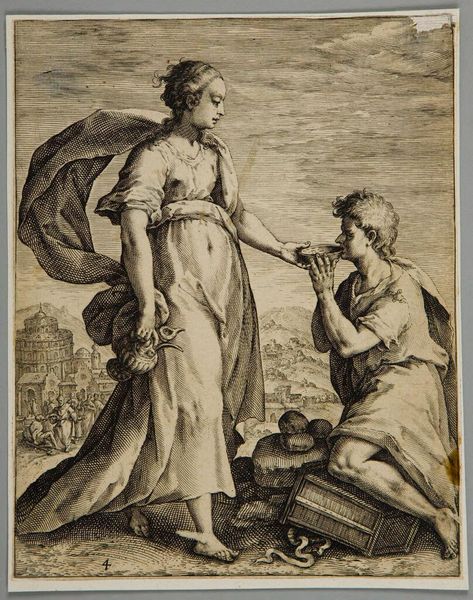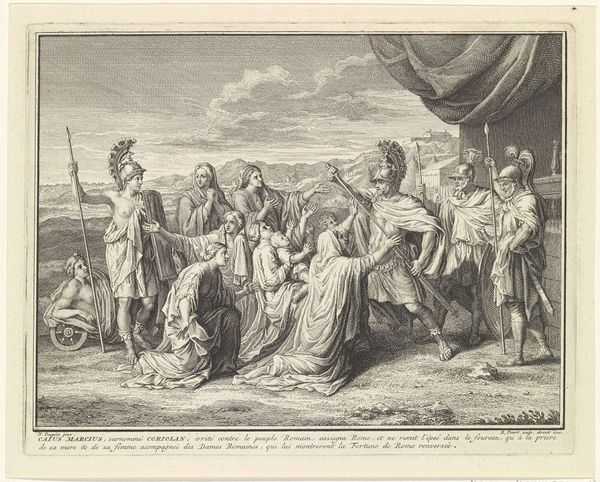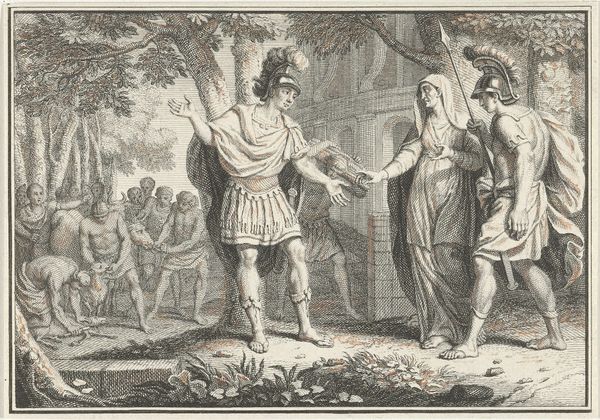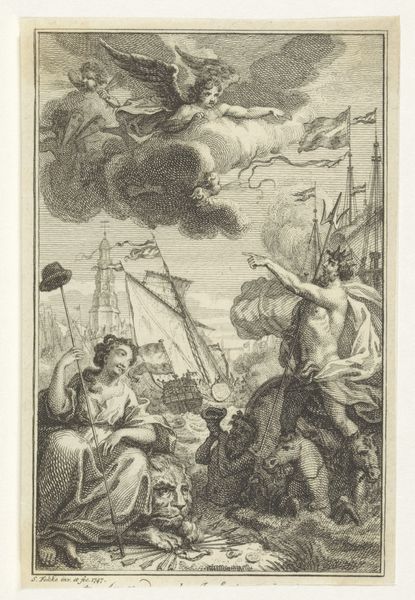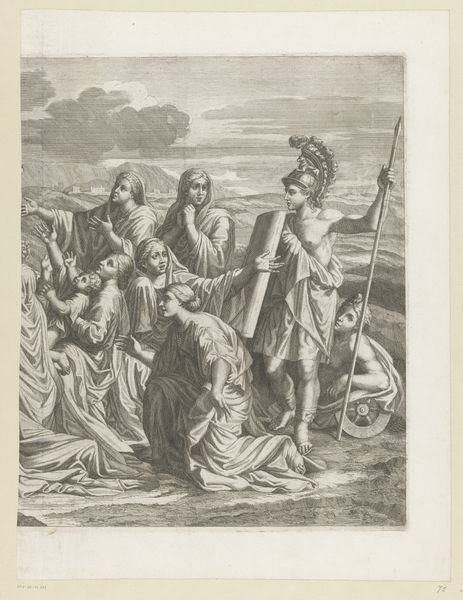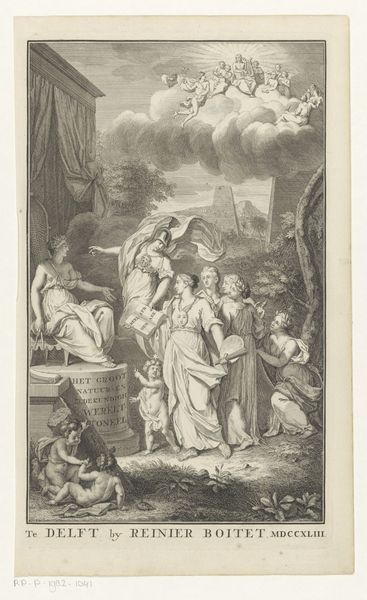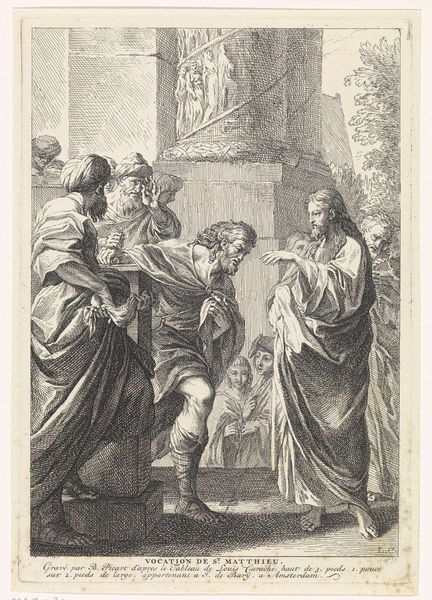
drawing, ink, engraving
#
drawing
#
allegory
#
pen illustration
#
pencil sketch
#
caricature
#
ink
#
ink drawing experimentation
#
classicism
#
history-painting
#
engraving
Dimensions: height 137 mm, width 83 mm
Copyright: Rijks Museum: Open Domain
This engraving, "Arrival of the statue of Cybele," was made by Ludwig Gottlieb Portman, probably in the early 1800s, using a technique that goes back centuries. Engraving is an intaglio process, meaning that the image is incised into a metal plate, traditionally copper. The engraver uses a tool called a burin to cut lines into the surface, creating grooves that will hold ink. The plate is then inked, and the surface wiped clean, leaving ink only in the incised lines. Finally, the plate is pressed against paper, transferring the image. This method allows for a high level of detail and precision, evident in the fine lines and shading of Portman's print. But it is also labor-intensive, requiring great skill and patience. In its time, engraving played a crucial role in reproducing and disseminating images, acting as a kind of proto-industrialization of art. By understanding the materials and processes involved, we can appreciate not only the artistic skill but also the social and cultural context in which this image was made.
Comments
No comments
Be the first to comment and join the conversation on the ultimate creative platform.
